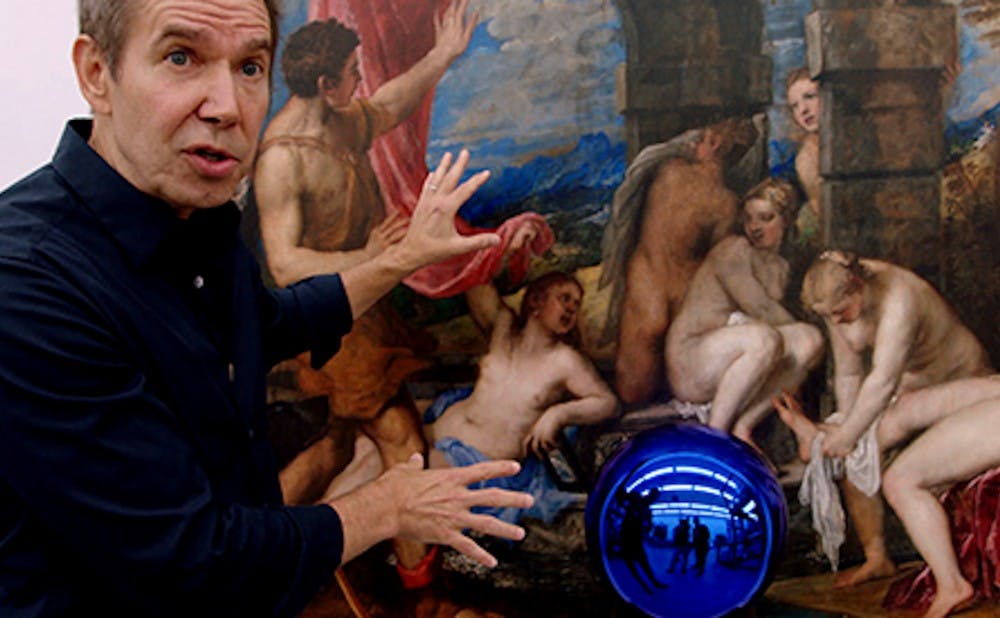Seeing contemporary artworks ranging from a huge canvas with two color blocks to wooden pieces glued on the wall in museums, I’ve often been confused about what inspires the museums to display the works. But I’ve always believed there was something inherently excellent about the works that made them worthy of being revered. Watching the film “The Price of Everything,” though, I was surprised to discover the extent to which the values of contemporary artworks are tied to their prices and the amount of power that wealthy individual collectors have over what gets to be immortalized in museums.
“The Price of Everything,” directed by Nathaniel Kahn, portrays key players of the contemporary art world, art market, collectors and artists. Through the quickly changing scenes and characters contradicting each other, the film sparks debates about the value of contemporary artwork and its accessibility to the public.
In the contemporary art world, artwork has become more available to the public in various places, including public bathrooms — for example, people wait in a long line to use Maurizio Cattelan’s golden toilet, titled “America,” in the Guggenheim Museum in New York.
But at the same time, the film reveals that the greatest artists of today’s society are those who provoke more of a sensation around their artworks and sell more of them, not necessarily those with artistic skills. Outside of the museum, Louis Vuitton shops display handbags made in collaboration with Jeff Koons, another contemporary artist known for creating bizarre sculptures. Koons does not create his artworks on his own, but hires numerous assistants that turn his ideas into tangible products. Once the works go out into the art market, they are worth tens of thousands of dollars, though Koons did nothing but provide the blueprints of the works.
The juxtaposition of Koons’s brightly lit studio with a high ceiling and Larry Poons, a Japanese abstract painter, in his small isolated cottage in a countryside sheds light on the contrast between the artists who know how to “play the game,” as Khan says, and those who do not. Once a sensational contemporary artist, Poons suddenly disappeared from the public eye, even convincing some people that he was dead. One scene that shows the artist solitarily working on his painting in his studio, covered with old paint, reveals what happens to an artist who fails to attract the public.
This structure of the market also makes it difficult for female artists to become successful. Marilyn Minter, whose blurry, photorealistic paintings were recently discovered, says that people admire a few lucky female artists, usually “after they are really old or dead.” Those “failed” artists beg the question of who gets to dominate the contemporary art world, in which only those with the marketing skills to advertise their works and the privilege to have numerous wealthy collectors buying their works are remembered.
The film sheds light on another debate about what works get to be displayed in museums, which are considered as the “gatekeepers” of culture, only showing works that are worthy of being preserved.
Although many artists want to have the honor of having their works displayed in museums, a lot of them end up on the walls of wealthy collectors’ apartments. Art critic Jerry Saltz says seeing an artwork being sold at an auction is like “saying goodbye” to the work, because the collectors rarely reveal their works to the public again, bequeathing their artworks to their children. As if to verify Saltz, Edlis, as he donates his massive collection of contemporary artwork to the Art Institute of Chicago, says the only reason he made such a donation was that he had “no grandkids.”
With collectors like Edlis, museums have to compete to acquire works of art and prevent them from disappearing into extravagant, gated mansions. Amy Cappellazzo, chairman of the Fine Art division of art dealer Sotheby’s, even said that letting museums acquire artworks and display them to the public is like a “socialist democratic” way of “avoiding rich people who want them.” But often not having enough funding to purchase high-quality works, museums rely heavily on private donations, which give collectors the right to choose what can be displayed in galleries.
I walked out of the theater, thinking contemporary works that get to be admired in museums may not necessarily be masterpieces but simply lucky enough to catch the eyes of rich collectors. But realizing how subjectively the value of contemporary artwork is determined, I became eager to find works I could relate to and feel a connection to, instead of admiring whatever museums have on their walls.
Get The Chronicle straight to your inbox
Sign up for our weekly newsletter. Cancel at any time.

